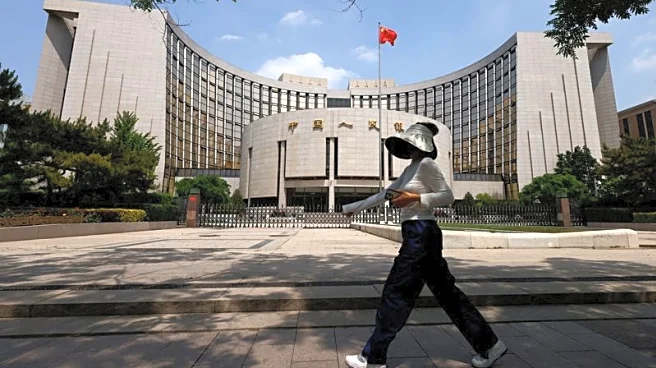What's Happening?
The Central Bank of Kenya (CBK) is seeking $260 million through the reopening of 15-year and 25-year Treasury bonds to provide budgetary support. The bonds offer annual returns of 12.34% and 14.19%, respectively,
and are part of Kenya's strategy to rely on domestic borrowing to ease fiscal pressure. The move comes as Kenya's total public debt increased by approximately $1.63 billion between June and September 2025, driven by domestic borrowing. The reopening of these bonds reflects President William Ruto's efforts to reduce reliance on costly external loans, which can exacerbate foreign exchange pressures.
Why It's Important?
This development is significant for Kenya's economy as it highlights the government's focus on domestic resource mobilization to address fiscal challenges. By offering attractive returns on long-term bonds, Kenya aims to attract institutional investors like pension funds and insurers, providing stable income opportunities. The strategy to reduce external debt exposure is crucial for maintaining economic stability and protecting the Kenyan shilling from foreign exchange volatility. The success of this bond issuance could influence future fiscal policies and investor confidence in Kenya's economic management.
What's Next?
Secondary trading for these bonds will begin on November 24, allowing investors to trade through licensed financial institutions. The CBK's strategy to lengthen the maturity profile of domestic debt is expected to continue, offering investors stable, long-term income opportunities. Analysts anticipate sustained interest in long-term instruments, although retail investors may remain absent due to high entry thresholds. The government's ongoing fiscal consolidation efforts will be closely monitored, as they balance infrastructure and social spending needs.
Beyond the Headlines
The reopening of these bonds reflects broader economic trends in Kenya, including the shift towards domestic borrowing and the impact of fiscal policies on economic growth. The government's approach to managing debt and attracting investment could have long-term implications for Kenya's economic stability and development. The focus on domestic resource mobilization highlights the challenges faced by emerging economies in balancing fiscal needs with external debt pressures.












